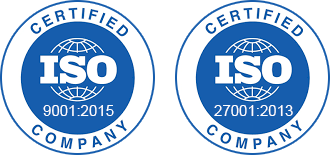
Propylene Glycol Procurement Intelligence Report, 2024 - 2030 (Revenue Forecast, Supplier Ranking & Matrix, Emerging Technologies, Pricing Models, Cost Structure, Engagement & Operating Model, Competitive Landscape)
- Published Date: ---
- Base Year for Estimate: 2022
- Report ID: GVR-P-UC-175
- Format: Electronic (PDF)
- Historical Data: 2020 - 2021
- Number of Pages: 0
Research Scope & Content Outline
Chapter 1. Methodology and Scope
1.1. Market Segmentation & Scope
1.2. Research Methodology
1.3. Research Scope & Assumption
1.4. Information Procurement
1.4.1. Purchased Database
1.4.2. GVR’s Internal Database
1.4.3. Secondary Sources & Third-Party Perspectives
1.4.4. Primary Research
1.5. Information Analysis
1.5.1. Data Analysis Models
1.6. Market Formulation & Data Visualization
1.7. Data Validation & Publishing
Chapter 2. Propylene Glycol Market Intelligence
2.1. Category Definition
2.2. Category Intelligence
2.2.1. Market Size
2.2.2. Trends
2.2.3. Drivers
2.2.4. Challenges
2.2.5. Segmental Outlook
2.2.6. Regional Outlook
2.3. Technology
2.3.1. Emerging Technology
2.3.2. Best Practices in the Industry
2.4. Regulatory Landscape
2.5. Porter’s Five Forces Analysis
2.5.1. Bargaining power of suppliers
2.5.2. Bargaining power of buyers
2.5.3. Threat of substitutes
2.5.4. Threat of new entrants
2.5.5. Competitive rivalry
Chapter 3. Propylene Glycol Market Supplier Intelligence
3.1. Identification of top 12 suppliers
3.1.1. Adeka Corporation
3.1.2. AGC Group
3.1.3. Archer Daniels Midland Company
3.1.4. BASF SE
3.1.5. Cargill Incorporated
3.1.6. Huntsman Corporation
3.1.7. INEOS AG
3.1.8. Lonza Group AG
3.1.9. LyondellBasell Industries N.V.
3.1.10. Repsol S.A.
3.1.11. Shell plc
3.1.12. The Dow Chemical Company
3.2. Propylene Glycol Supply Chain Analysis
3.3. Propylene Glycol Supplier Landscape
3.4. Propylene Glycol Supplier Ranking Methodology
3.4.1. Supplier Operational Capabilities
3.4.1.1. Geographical Service Provision
3.4.1.2. Industries Served
3.4.1.3. Years in Service
3.4.1.4. Employee Strength
3.4.1.5. Revenue Generated
3.4.1.6. Regulatory Certifications
3.4.1.7. Key Clientele
3.4.2. Supplier Functional Capabilities
3.4.2.1. Product Source
3.4.2.1.1. Petroleum-based
3.4.2.1.2. Bio-based
3.4.2.2. Product Grade
3.4.2.2.1. Industrial
3.4.2.2.2. Pharmaceutical
3.4.2.3. Use of Sustainable Materials (Yes/No)
3.4.2.4. Customer Service
3.4.2.5. Lead Time
3.4.2.6. Others
3.5. Propylene Glycol Supplier Scoring Criteria
3.6. Propylene Glycol Supplier Positional Matrix (SPM)
3.6.1. Rulers
3.6.2. Challengers
3.6.3. Loungers
3.6.4. Niches
3.7. Propylene Glycol Supplier Market Concentration
3.7.1. Industry structure
3.8. Recommended Propylene Glycol Suppliers
3.8.1. Supplier 1 with detailed profile
3.8.2. Supplier 2 with detailed profile
3.8.3. Supplier 3 with detailed profile
Chapter 4. Competitive Landscape
4.1. Recent Supplier Developments with Measured Impact
4.1.1. Joint Ventures
4.1.2. Mergers & Acquisitions
4.1.3. Collaborations or Partnerships
4.1.4. Other major developments
4.2. Supply-Demand Analysis
4.2.1. Supply Analysis
4.2.2. Demand Analysis
Chapter 5. Propylene Glycol Pricing and Cost Intelligence
5.1. Cost Structure Overview
5.1.1. Raw materials
5.1.2. Labor
5.1.3. Equipment
5.1.4. Packaging
5.1.5. Logistics
5.1.6. Others
5.2. Pricing Intelligence
5.2.1. Propylene Oxide, Price Examples by Region, March 2024, USD/KG
5.2.2. Factors Influencing the Prices for Propylene Glycol
5.2.2.1. Fluctuations in Raw Material Prices
5.2.2.2. Variations in Labor Costs
5.2.2.3. Changes in Energy Costs
5.2.2.4. Geographic Location-Based Price Fluctuations
5.2.3. Pricing Model Analysis
5.2.3.1. Cost-plus pricing or,
5.2.3.2. Volume-based pricing or,
5.2.3.3. Demand-based pricing or,
5.2.3.4. Competition-based pricing or,
5.2.3.5. Others
5.2.4. Propylene Glycol Prices - Supplier’s Quotation
Chapter 6. Sourcing Intelligence
6.1. Engagement Model
6.1.1. Fully Outsourcing Model or,
6.1.2. Partial/Hybrid Outsourcing Model or,
6.1.3. In-house Product Development Model or,
6.1.4. Shared Service Model
6.2. Operating Model
6.2.1. Basic Provider or,
6.2.2. Approved Provider or,
6.2.3. Performance-based Model or,
6.2.4. Others
6.3. KPI/SLA Elements
6.4. Negotiation Strategies
6.5. LCC/BCC Sourcing Analysis
6.5.1. China
6.5.2. India
6.5.3. Indonesia
6.5.4. South Korea
6.5.5. Germany
6.5.6. Insights on top 2 LCC/BCC Countries
Add-on Services
Should Cost Analysis
Component wise cost break down for better negotiation for the client, highlights the key cost drivers in the market with future price fluctuation for different materials (e.g.: steel, aluminum, etc.) used in the production process
Rate Benchmarking
Offering cost transparency for different products / services procured by the client. A typical report involves 2-3 case scenarios helping clients to select the best suited engagement with the supplier
Salary Benchmarking
Determining and forecasting salaries for specific skill set labor to make decision on outsourcing vs in-house.
Supplier Newsletter
A typical newsletter study by capturing latest information for specific suppliers related to: M&As, technological innovations, expansion, litigations, bankruptcy etc.


